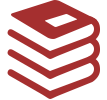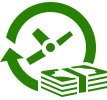Flexible Clinical Interview Assignment
The goal of this assignment is to give you experience in conducting, analyzing, and writing up
a “flexible” clinical interview. A flexible or clinical interview is traditionally conducted in person, face to
face with your student. However, because of the current schooling challenge we are facing due to the
pandemic, you will conduct your interview with a student online or in-person.
The student you choosemay be from you school, afterschool, or personal connections. If you choose to conduct the interviewwith a student in person, please only do so with a child within your household. Do NOT go against social
distancing guidelines to conduct an interview. Your safety is paramount.
As best as possible, the interview should focus on a current math topic you are teaching that requires
algebraic reasoning. If the student you choose to interview is of a different grade level than which you
teach, then use a math topic at the student’s level that requires algebraic reasoning. As best as possible
take a few pictures of the student’s work as they are working and their final work for each task. You will
include these pictures in the appendix of this report and in your presentation.
1. Prepare a protocol giving a list of math questions and tasks. Your protocol should have at least 5
math tasks, and the interview should be between 20 to 25 minutes. These tasks should be based on
our work on open problems and rich tasks as well as relevant research and theory. Choose/create
different tasks that involve algebraic reasoning in different ways so you can gain as full an
understanding as you can about your student’s thinking.
You will ask your student to solve these problems/tasks and explain their thinking and strategies the
best way they can. If they need to write or draw models or use manipulatives to help them explain,
that’s perfectly fine. If you’re working in person with the student, be sure to have drawing tools,
paper, dry erase boards, and manipulatives available. If you’re working online with the student, be
sure to encourage your student to have drawing tools and paper nearby.
Suggest items that they
may have in their homes (or even substitute items) that they may use to do the problems. Your
student may not finish the math tasks within the time frame, and that is fine. You know your
students and their attention span. If it becomes clear that they cannot complete the task, let them
know that both of you can come back and finish it together at the end.
2. Think about your students. Choose a student who you know will explain their thinking, regardless of
proficiency level. Describe your assignment and its purpose to your student and get permission to
do it including video recording the interview. If they do not agree to the video, you can use a
student who will or take detailed written observation notes of the original student.
3. Conduct the interview. Do a small test run to make sure the video and audio quality of the video is
good. The interview is the time for your student to think freely and answer the problems in
whatever way they can. You can ask probing or clarifying questions to gain deeper understanding of
their thinking but you CANNOT teach or help during the interview. Remember, the point of this
interview is to understand; not to teach.
4. If successful, write the report; otherwise, do it again with another student. Success is defined by
your having interesting material on which to write. (For example, if your student is reticent
throughout the interview, you will have to find another student.)
5. Your report should follow APA guidelines for title page, body, citations, reference page, and
appendix. If you are not familiar with APA guidelines, you can refer to any number of websites for
exemplars (i.e.,
https://owl.purdue.edu/owl/research_and_citation/apa_style/apa_formatting_and_style_guide/ge
neral_format.html). Your report must be typed, 7 to 10 pages, double-spaced, 10 to 12 point font
size, 1” margins on all sides in Word, and include the following sections:
· Introduction: 1 page introduction to include the goal of your interview; literature on the
flexible, clinical interview; and, literature on the math topic you chose (e.g., instructional
strategies, common misconceptions).
· Student Background Information: 1 page background information about the student (e.g., age,
sex, academic standing, learning needs, strengths, weaknesses) and any other information
relevant to the topic.
· Testing Conditions: A description of the testing conditions and how the student responded to
them.
· Protocol: Your interview protocol with core and follow-up questions as well as tools and
manipulatives provided or used by the student.
· Findings: Specific findings and interpretations of your findings, in sequence from the protocol,
using key observations and quotations from the interview. This section should be wellstructured and detailed.
· Discussion: Discussion of results overall in relation to the student and the class.
· Self-reflection: 1-2 page self-reflection on your protocol construction, student selection,
interview process, exciting/disappointing/unexpected moments, revelations, what you would do
differently next time and why, and impact on your current and future instructional and
assessment strategies.
· Appendix: Any images of student work which illustrate findings and overall discussion points.
6. Your report must be in Word. Email the typed report to me at pfleshman@gmail.com by Friday,
May 8, 11:59pm.











 Jermaine Byrant
Jermaine Byrant Nicole Johnson
Nicole Johnson









